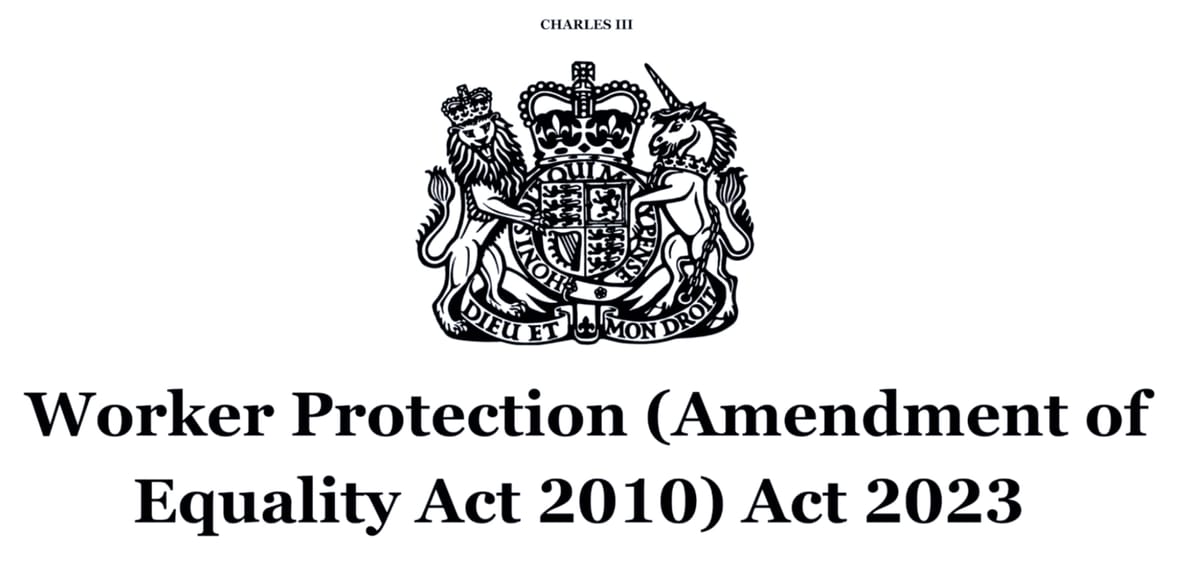The Worker Protection Act: A Major Step towards a Safer Workplace

In an unparalleled move towards ensuring workplace equality and safety, the Worker Protection Act, an amendment to the UK Equality Act 2010, will be enacted in October 2024. Aiming to abolish sexual harassment in the workplace, this act is a beacon of hope for all employees in the UK.
The Worker Protection Act mandates employers to take reasonable steps towards preventing sexual harassment at the workplace. Regular training, comprehensive and clear harassment policies, and procedures to address any alleged harassment are all a part of this concerted effort. Non-compliance with the act can lead to expensive tribunals and even investigations by the Equality and Human Rights Commission.
The need for such a measure is evident in the shocking statistics. A study by TUC revealed that three out of every five women have experienced some form of sexual harassment at work. Additionally, a significant proportion of LGBT workers also face harassment, often finding it hard to report such incidents to their employers.
Key Provisions of the Worker Protection Act
The Worker Protection Act introduces several key provisions designed to strengthen the framework for preventing and addressing sexual harassment in the workplace. Here are some of the most significant aspects of the legislation:
- Employer Duties and Responsibilities:
- Employers are required to conduct thorough risk assessments to identify potential areas where sexual harassment might occur.
- Development and implementation of comprehensive anti-harassment policies are mandated, which must outline clear procedures for reporting and dealing with such incidents.
- Regular training sessions must be conducted for all employees, ensuring they are aware of their rights and the processes in place to protect them.
- Protection from Third-Party Harassment:
- The Act extends protection to employees from harassment by third parties, such as clients, customers, or suppliers. Employers are required to take reasonable steps to prevent such incidents, and failure to do so could result in liability.
- Mandatory Reporting and Transparency:
- Companies with over 250 employees are required to publish annual reports on the number and nature of harassment complaints received, and the actions taken in response. This is aimed at increasing transparency and accountability.
- Strengthened Enforcement Mechanisms:
- The Equality and Human Rights Commission (EHRC) is granted enhanced powers to conduct investigations and enforce compliance. Employers found in breach of the Act could face significant financial penalties and be subject to corrective orders.
- Introduction of a statutory code of practice that provides detailed guidance for employers on complying with their duties under the Act. This includes templates for policies, training programs, and best practice protocols.
- Whistleblower Protections:
- Employees who report instances of sexual harassment are protected under strengthened whistleblower provisions, ensuring they are not subjected to retaliation or victimisation for coming forward.
- Additional Support Measures:
- Establishment of a dedicated support fund for victims of workplace harassment, offering legal assistance, counselling services, and other forms of support to help them navigate through the aftermath of such incidents.
By embedding these provisions into law, the Worker Protection Act aims to foster safer and more respectful workplaces across the United Kingdom. Employers are urged to take these regulations seriously, not just as a legal obligation, but as a fundamental step toward building a culture of dignity and respect within their organisations.
To combat such malpractices and create a safe, inclusive work environment, it is crucial for companies to take proactive steps to tackle issues of sexual harassment. Stay Safe Global, a reputable entity in this domain, specialises in providing training and solutions to help businesses comply with the Worker Protection Act, thereby ensuring their workforce is protected from harassment.
Employers must act not only to comply with the legal framework but also to uphold the moral responsibility of ensuring a workplace free from harassment. Implementing robust policies is just the beginning. Continuous awareness and training programs are essential to keep the workforce informed and vigilant. Encouraging open communication and providing secure channels for reporting incidents can help victims come forward without fear of retaliation.
Moreover, fostering an inclusive company culture where every individual feels respected and valued can significantly mitigate instances of harassment. It's crucial for leadership to lead by example, demonstrating zero tolerance towards any form of harassment. This commitment from the top can permeate through the entire organization, establishing a work environment built on mutual respect and dignity.
In order to evaluate the effectiveness of these measures, regular audits and reviews should be conducted. These assessments can help identify gaps in the current policies and procedures, allowing for timely improvements. By taking these steps, companies not only adhere to the Worker Protection Act but also enhance their reputation as ethical employers who prioritize their employees' well-being.
In conclusion, addressing workplace harassment requires a multifaceted approach that combines legal compliance, continuous education, open communication, and strong leadership. By working together, businesses can create a safer, more equitable environment for everyone. Let us all strive to make workplaces where respect, dignity, and safety are the standard, not the exception.





